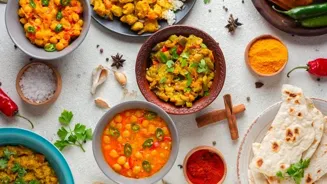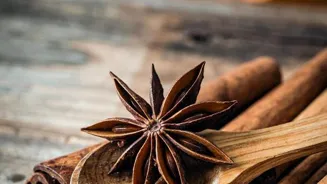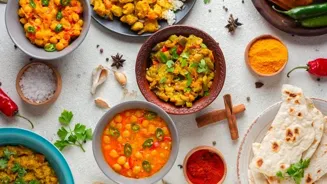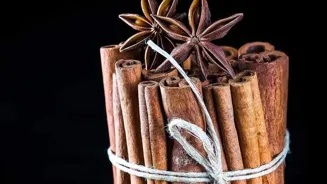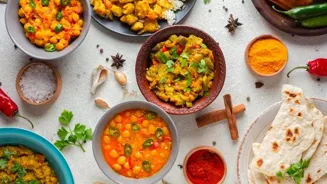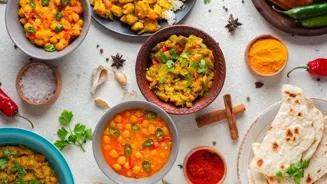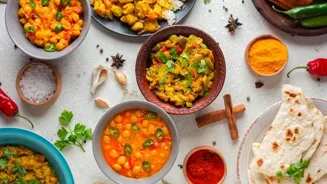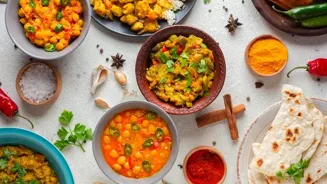Unlock the secrets of Indian spices with our 10 tips. From tempering to spice blends, enhance your culinary skills!
Indian cuisine, with its vibrant colours and aromatic flavours, owes its magic to the
skillful use of spices. But navigating the world of Indian spices can be a tad overwhelming for the uninitiated. Fear not!
With a few simple guidelines, you can unlock a world of culinary possibilities and bring the authentic taste of India to your kitchen. Here are 10 must-know tips for cooking with Indian spices that will transform you from a spice novice to a spice aficionado.
We will give a complete guide to understanding the basic facts about Indian spices.
Understand Indian spices before cooking; know flavor profiles, freshness, and storage
Before you embark on your Indian cooking journey, take stock of your spice rack. Familiarize yourself with the basics.
Common Indian spices include turmeric (haldi), coriander (dhania), cumin (jeera), mustard seeds (rai), cardamom (elaichi), cloves (laung), cinnamon (dalchini), and various chili powders. Understanding each spice's flavour profile – is it earthy, sweet, pungent, or citrusy? – is crucial.
Buy whole spices whenever possible and grind them yourself. The flavour is significantly better compared to pre-ground powders. Store spices in airtight containers away from heat and light to preserve their freshness and potency.
And remember to check the expiry dates; old spices lose their flavour. It is important to first understand the type of spices, how it taste and what each spice consist of. Each spice also gives off a different aroma.
Do your research to find out each of this basic things to help know your spices better. A spice rack should be treated like a tool. Just like a carpenter uses his tools, a cook uses the spices to create dishes.
Tadka enhances Indian dishes with aromatic spices in hot oil
Tadka, also known as tempering, is a quintessential Indian cooking technique that involves heating oil or ghee (clarified butter) and adding whole spices or aromatics to it. As the spices sizzle in the hot oil, they release their essential oils, infusing the oil with their flavour.
This flavour-infused oil is then added to the dish, adding a burst of aroma and taste. Mustard seeds, cumin seeds, asafoetida (hing), and dried red chilies are commonly used for tadka. The oil should be hot enough for the spices to sizzle but not so hot that they burn.
This step is crucial as it brings out the complete aroma of the spices. Many lentils and vegetable dishes employ this method to add complex flavours. Mastering the tadka is like learning a secret language of Indian cooking. Try to familiarise yourself with this process for best results.
Experiment with different spices to create your own unique tadka blends. This will become a signature part of your cooking.
Roasting whole spices enhances flavor; grind for richer taste
Roasting whole spices before grinding them enhances their flavour and aroma. The heat brings out the essential oils, creating a richer, more complex taste. Dry roast spices like coriander seeds, cumin seeds, and dried red chilies in a pan over low heat until they become fragrant and slightly darker.
Be careful not to burn them. Once cooled, grind them into a fine powder using a spice grinder or mortar and pestle. Freshly roasted and ground spices offer a far superior flavour compared to store-bought ground spices.
Roasting helps to release certain flavour compounds creating a depth that you just can't achieve with raw spices. The entire kitchen will be filled with a warm and inviting aroma as the spices roast. So, take the time to roast your spices for a truly authentic Indian cooking experience.
You need to learn to buy raw spices, roast them and then use them.
Indian spice blends offer unique flavors; customize for creativity
Indian cuisine boasts a wide array of spice blends, each with its unique flavour profile. Garam masala, chaat masala, and sambar powder are just a few examples. You can buy pre-made spice blends, but making your own allows you to customize the flavour to your liking.
Experiment with different combinations of spices to create your signature blends. Garam masala, a staple in many Indian dishes, typically includes cinnamon, cardamom, cloves, cumin, coriander, and black peppercorns.
Chaat masala, used to sprinkle on snacks and salads, often contains dried mango powder (amchur), black salt, cumin, coriander, and chili powder. Understanding the composition of these blends will allow you to adjust them to your own taste preferences.
Making your own spice blends is a great way to explore your creativity in the kitchen. Do not hesitate to try different ingredients in different quantities.
Layer spices for optimal flavor in cooking; timing is key
The order in which you add spices to a dish can significantly impact the final flavour. Whole spices are typically added at the beginning, during the tadka, to infuse the oil with their flavour.
Ground spices are usually added later in the cooking process, often towards the end, to preserve their potency. Some spices, like garam masala, are added right at the end as a finishing touch.
This layering technique allows the flavours to meld together gradually, creating a well-balanced and harmonious dish. Think of it like building a symphony of flavours, with each spice playing its part at the right moment.
The timing of when you add each spice is very crucial to get the best flavour as well as bring out the aroma of the spices being used. It might take a lot of experiments to perfect, so do not give up. With a little time and patience everyone can learn to do this perfectly.
Understanding chili powders for desired spiciness in Indian cuisine
Indian cuisine offers a wide spectrum of heat levels, from mild to fiery. Understanding the different types of chili powders is essential for achieving the desired level of spiciness.
Kashmiri chili powder is known for its vibrant red colour and mild heat, while cayenne pepper and chili flakes pack a significant punch. Remember that heat levels can vary depending on the brand and the freshness of the chili powder. Start with a small amount and adjust according to your taste.
If you accidentally add too much chili powder, you can try adding a touch of yogurt or cream to offset the heat. It's always better to start mild and gradually increase the spiciness to avoid overwhelming the dish.
It is not easy to know how strong a chili powder is, so you need to be careful when using it. Try starting out with very little quantity and adding more if needed.
AI Generated Content. Glance/InMobi shall have no liability for the content